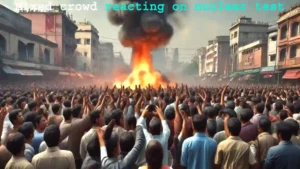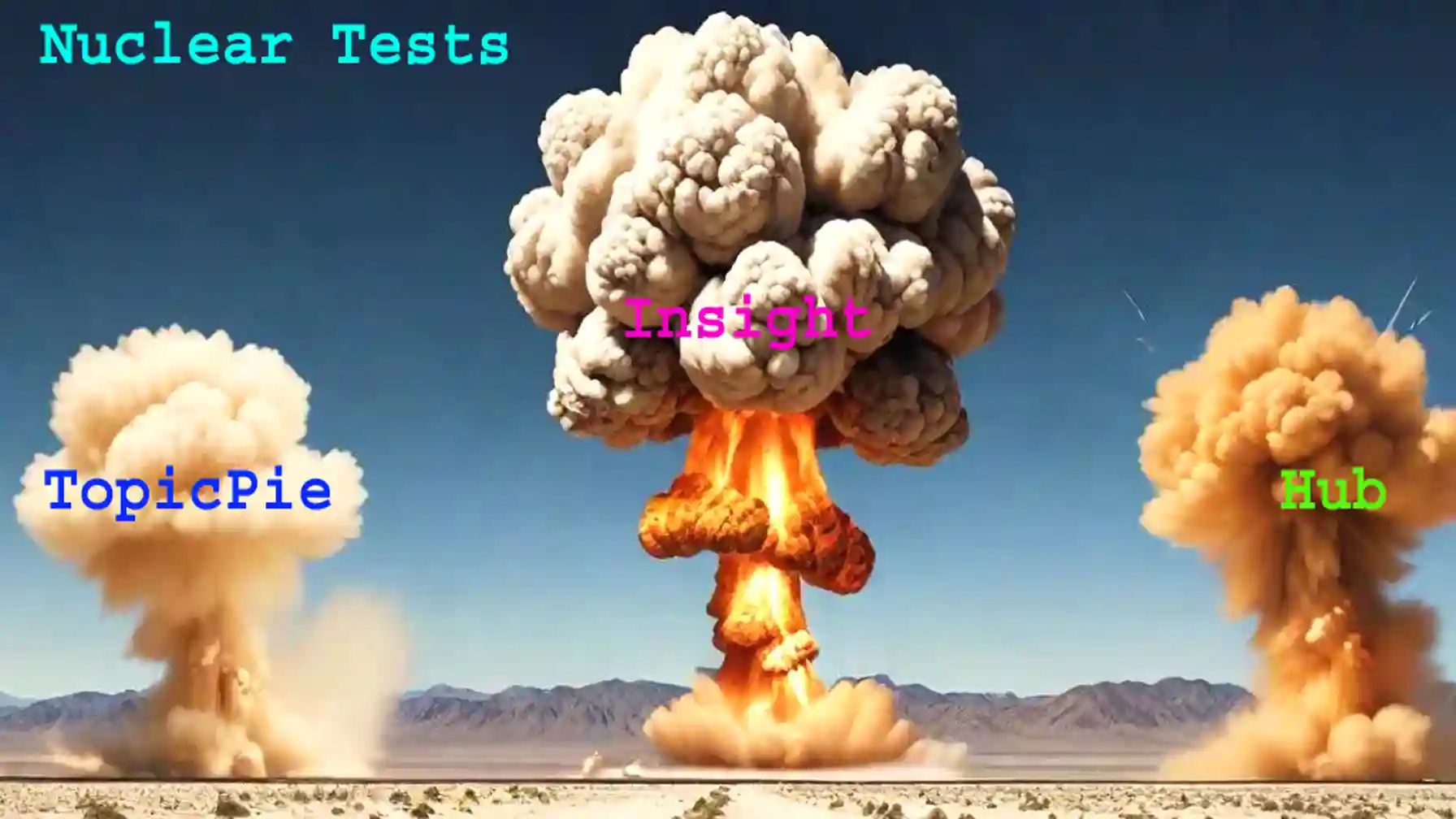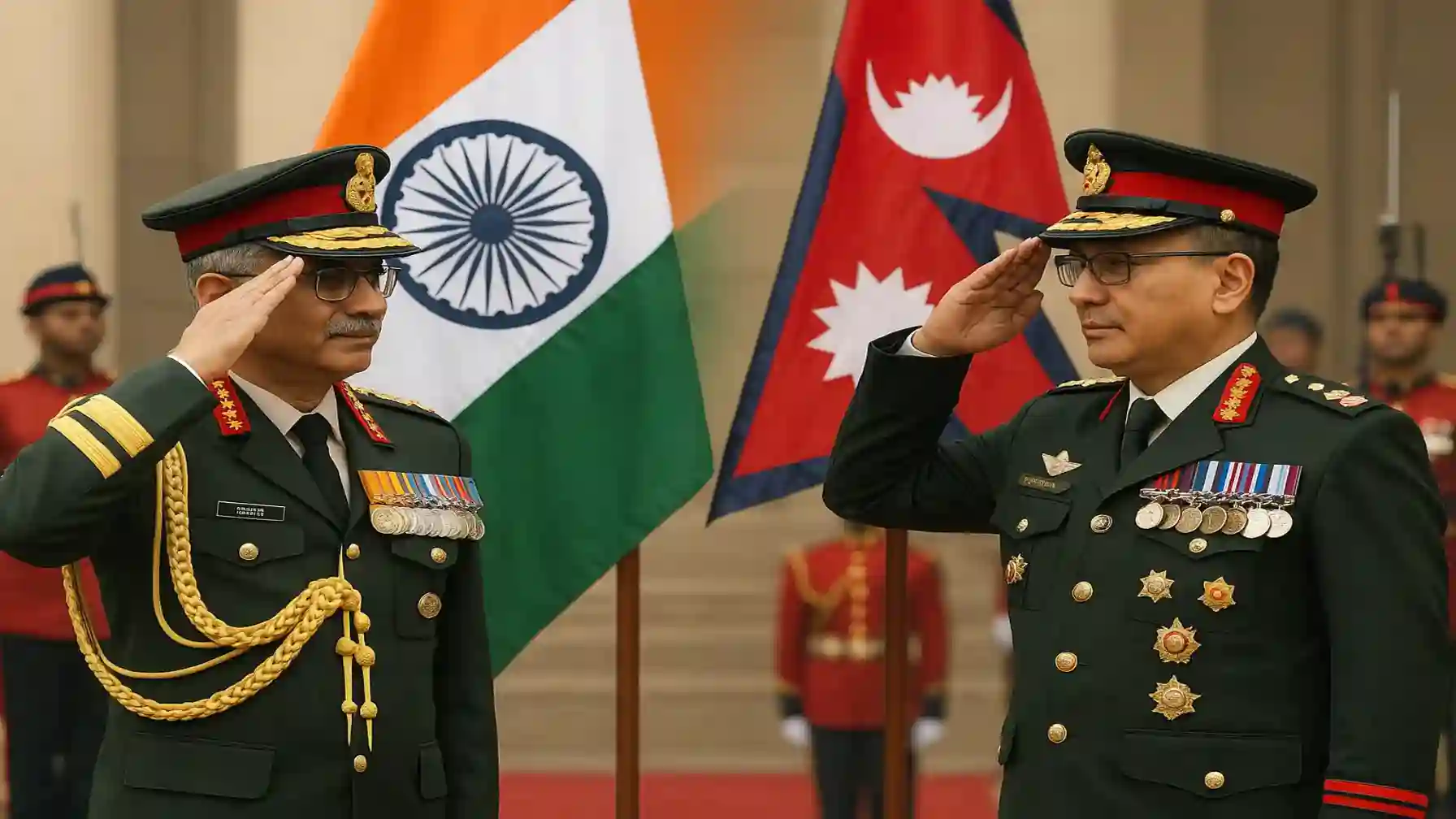In May 1998, the name “Operation Shakti” reverberated across the globe. This covert mission, shrouded in secrecy and driven by ambition, forever altered India’s position on the world stage. Deep within the desolate Thar Desert, a series of tremors rattled the sands of Pokhran, a remote Indian village. These weren’t tremors of nature, but the deliberate detonation of nuclear devices, marking a defining moment in modern Indian history.
Operation Shakti wasn’t merely a scientific marvel; it was the culmination of decades of strategic planning, political maneuvering, and unwavering determination. Fueled by a desire for national security and a place at the global high table, India embarked on a clandestine journey to develop its nuclear arsenal. This blog post delves deep into this captivating story, uncovering the fascinating background that led to Operation Shakti, the strategic calculations that fueled the mission, and the international community’s complex reactions.
But the story doesn’t end there. We’ll also explore the lasting legacy of Operation Shakti. Did it usher in a new era of deterrence for India, or did it ignite regional tensions with neighboring Pakistan? Join us as we unravel the captivating tale of how Operation Shakti, a single mission in the Thar Desert, forever changed the course of Indian history.
Operation Shakti: Background of India’s Nuclear Program
India’s journey towards becoming a nuclear power began in the 1940s with the establishment of the Tata Institute of Fundamental Research. This marked the initial steps towards developing expertise in nuclear science and technology, with a focus on peaceful uses like energy production and scientific research. However, tensions with neighboring countries and security concerns prompted a shift towards military applications culminating in Operation Shakti.
In 1948, India embarked on its Atomic Energy Program under the leadership of Homi J. Bhabha, known as the “father of Indian nuclear program.” The formation of the Atomic Energy Commission in 1948 laid the foundation for India’s pursuit of peaceful uses of atomic energy.
Throughout the following decades, India focused on advancing its nuclear capabilities for energy production and scientific research. However, tensions with neighboring countries and security concerns prompted a shift towards military applications culminating in Operation Shakti.
The groundwork laid by years of investment and research positioned India to successfully conduct nuclear tests at Pokhran in May 1998. This pivotal moment solidified India’s status as a nuclear-armed state with advanced technological capabilities.
The Significance of Pokhran-II:
The significance of Pokhran-II, also known as Operation Shakti, lies in its monumental impact on India’s nuclear capabilities and global standing. This series of nuclear tests conducted in May 1998 marked a defining moment for India as it officially declared itself a nuclear-armed state.
Also Read: Democracy Through Time: India vs United States
By successfully conducting these tests, India demonstrated its mastery over nuclear technology and showcased its deterrence capability to potential adversaries. However, the tests also sparked international criticism and concerns about escalation in South Asia.
Pokhran-II triggered debates worldwide about non-proliferation efforts and the balance of power in the region. It brought attention to India’s strategic priorities and highlighted the country’s determination to safeguard its sovereignty through technological advancements.
The significance of Pokhran-II reverberates through history as a milestone that reshaped regional dynamics and asserted India’s place on the world stage, while also generating complex international reactions.
Political Developments Leading to Pokhran-II:
From 1988 to 1998, India was steadily building momentum towards establishing itself as a nuclear power. The political landscape during this period was marked by significant developments that laid the foundation for Pokhran-II.
Under the leadership of Prime Minister Rajiv Gandhi in the late 1980s, India started exploring its options regarding nuclear capabilities. This initial groundwork was furthered by subsequent governments, including those led by Narasimha Rao and Atal Bihari Vajpayee.
During this time, key decisions were made to enhance India’s nuclear research and development capabilities. The country’s scientific community played a crucial role in advancing these initiatives with dedication and expertise.
The preparations for Pokhran-II involved meticulous planning and coordination among various teams specializing in different aspects of nuclear technology. Secrecy surrounding the operation was paramount to its success, requiring strategic logistics management.
As tensions in the region escalated, culminating in international pressure on India, the stage was set for one of the most defining moments in Indian history – Operation Shakti at Pokhran-II.
1988–1998: Building Momentum
During the period of 1988-1998, India’s nuclear program began to gather momentum as strategic forces felt the need for a stronger defense capacity. The political landscape was evolving, and there was a growing consensus on the necessity of nuclear deterrence.
In 1988, then-Prime Minister Rajiv Gandhi initiated steps towards developing India’s nuclear capabilities in response to regional security concerns. This set the stage for subsequent administrations to further advance these efforts.
The changing global dynamics post-Cold War also influenced India’s stance, with neighboring countries already possessing nuclear capabilities. As tensions escalated in South Asia, the urgency to bolster defense measures became more apparent.
This period laid down crucial groundwork for what would eventually culminate in Pokhran-II – Operation Shakti – marking a significant turning point in India’s journey towards becoming a recognized nuclear power.
Preparations and Development Teams
In the lead-up to Pokhran-II, meticulous preparations were key in ensuring the success of Operation Shakti. India’s nuclear scientists and engineers worked tirelessly behind closed doors, dedicating themselves to developing cutting-edge technology for the tests.
These development teams were comprised of some of the brightest minds in India’s scientific community. Their expertise spanned various disciplines, from physics to engineering, with each member playing a crucial role in advancing India’s nuclear capabilities.
The secrecy surrounding their work was paramount. Under intense international scrutiny, these teams operated discreetly to avoid detection and maintain strategic advantage. The logistics involved in coordinating such a complex operation were immense but meticulously managed by experienced professionals.
Despite facing numerous challenges and obstacles along the way, these dedicated teams persevered with unwavering determination and commitment towards achieving India’s goal of becoming a nuclear power.
Secrecy and Logistics
When it came to Operation Shakti, secrecy was of paramount importance. The Indian government went to great lengths to keep the operation under wraps, with only a select few individuals aware of the details. Teams worked tirelessly in remote locations, away from prying eyes and satellites.
Logistics played a crucial role in ensuring that everything went according to plan. From transporting materials discreetly to setting up testing sites efficiently, every aspect was meticulously coordinated. Specialized equipment and resources were brought in surreptitiously to avoid detection.
The operational security measures put in place were unprecedented. Communication channels were encrypted, and strict protocols were followed to prevent any leaks or breaches. This level of secrecy and attention to detail ultimately contributed to the success of Pokhran-II and India’s emergence as a nuclear power on the global stage.
Nuclear Weapon Designs and Testing:
When it came to Operation Shakti, meticulous planning was crucial. India’s nuclear weapon designs were the result of years of scientific research and development. The team focused on achieving maximum efficiency while ensuring reliability in detonation.
The detonation during Pokhran-II showcased India’s technological prowess. The successful tests demonstrated the effectiveness of these weapons, solidifying India’s status as a nuclear power. The country had joined an elite group with advanced capabilities in nuclear technology.
Upon the announcement of the tests, domestic reactions were mixed. While many celebrated this milestone for national security, others expressed concerns about global repercussions. Nevertheless, India stood firm in its decision to conduct these tests.
The world closely monitored these developments, leading to various international reactions ranging from condemnation to cautious diplomatic engagement. Despite challenges, Operation Shakti left a lasting impact on global geopolitics and security dynamics.
Specifications and Detonation
As Operation Shakti unfolded in May 1998, India’s nuclear ambitions culminated in the detonation of five nuclear devices at the Pokhran test site. These tests showcased India’s capability to design and develop nuclear weapons, likely including fission devices used in nuclear bombs. While the specific details of the designs remain classified, the tests demonstrated India’s progress in nuclear technology. The successful detonation marked India’s arrival as a significant player in the global nuclear arena.
It’s important to remember that nuclear technology also has peaceful applications in areas like medicine, where it’s used in cancer treatment procedures, and power generation, where nuclear reactors provide clean energy.
Indian scientists and engineers meticulously crafted the devices, prioritizing precision and effectiveness. The tests aimed to demonstrate India’s mastery over various aspects of nuclear technology. The successful detonation marked India’s arrival as a significant player in the global nuclear arena.
The aftermath of these tests had far-reaching implications for India’s security posture and international relations. The legacy of that day continues to shape India’s strategic outlook on national defense and deterrence policies.
Announcement and Domestic Reactions
India’s announcement of becoming a nuclear power after the successful Pokhran-II tests sent a wave of emotions across the nation. The news dominated media coverage and sparked conversations throughout the country.
Public reactions were diverse, with some expressing concerns about international repercussions and others celebrating it as a historic achievement. Many viewed it as a symbol of India’s strength and ability to defend itself. Political leaders addressed the nation, emphasizing the strategic importance of nuclear capabilities for national security. The government faced both praise and criticism for its actions.
Political leaders addressed the nation, emphasizing the strategic importance of acquiring nuclear capabilities and assuring citizens that it was necessary for national security. The government faced both praise for its bold move and criticism for escalating tensions in the region. Domestic reactions highlighted the complex emotions and divided opinions surrounding Operation Shakti within Indian society.
International Reactions:
When India conducted Operation Shakti, the international community responded with a mix of shock and condemnation. Several countries expressed concern over the escalation of nuclear capabilities in South Asia. The United States, for instance, imposed economic sanctions on India post Pokhran-II.
China, a key regional player, strongly criticized India’s nuclear testing as it raised security threats in the region. Pakistan, India’s neighbor and long-standing rival also condemned the tests and retaliated by conducting its own series of nuclear tests shortly after.
On the other hand, some nations acknowledged India as a responsible nuclear power with peaceful intentions. Russia maintained close ties with India even after the tests took place. Operation Shakti triggered complex diplomatic reactions worldwide that shaped global perspectives on nuclear proliferation and disarmament efforts.
Reactions from Various Countries
Following the nuclear tests conducted during Operation Shakti, reactions poured in from various countries worldwide. Countries like the United States and China expressed strong condemnation towards India’s actions, raising concerns about regional stability and global non-proliferation efforts.
On the other hand, Pakistan, India’s long-standing rival, reacted with alarm and urgency. The tests sparked a new arms race in South Asia, heightening tensions between the neighboring nations and drawing international attention to the volatile situation.
Countries such as Russia and France took a more nuanced stance, acknowledging India’s security concerns while urging restraint and dialogue to prevent further escalation. The European Union called for diplomatic solutions and emphasized the importance of multilateral disarmament agreements in maintaining peace and security globally.
Operation Shakti triggered a complex web of reactions from various countries with differing perspectives on nuclear proliferation, regional stability, and international relations.
United Nations’ Response
Following the nuclear tests conducted by India during Operation Shakti, the United Nations swiftly responded to address the implications of these actions on international peace and security. The Security Council convened to discuss the situation, expressing concerns over potential escalation of tensions in South Asia due to these developments.
The UN urged both India and Pakistan to exercise restraint and adhere to their obligations under international agreements regarding nuclear proliferation. Various member states within the UN emphasized the importance of dialogue and diplomacy in resolving disputes rather than resorting to provocative actions that could lead to further instability in the region.
Efforts were made through diplomatic channels to encourage bilateral talks between India and Pakistan, aiming at diffusing tensions arising from the nuclear tests. The United Nations reiterated its commitment towards promoting global disarmament efforts, emphasizing the need for all nations to uphold non-proliferation norms for maintaining peace and stability worldwide.
Legacy of Operation Shakti:
Operation Shakti left a profound impact on India’s global standing. By successfully conducting nuclear tests, India asserted itself as a formidable nuclear power, gaining recognition and respect on the international stage. This demonstration of capability showcased India’s technological prowess and strategic advancements.
The legacy of Operation Shakti also influenced subsequent nuclear developments in the region. It sparked discussions about deterrence strategies and security dynamics in South Asia, shaping diplomatic relations between countries in the region. The tests prompted neighboring nations, particularly Pakistan, to reassess their own defense mechanisms and policies in response to India’s newfound capabilities.
Furthermore, Operation Shakti highlighted the importance of maintaining a balance between national security interests and global non-proliferation efforts. It underscored the complexities surrounding nuclear weaponry, urging policymakers to navigate these challenges with caution and responsibility.

Impact on India’s Global Standing
Since Operation Shakti in 1998, India’s global standing underwent a significant transformation. The successful nuclear tests positioned India as a formidable player on the world stage, asserting its capabilities as a nuclear power. This demonstration of technological prowess elevated India’s status and garnered respect from some nations. However, it also initially strained relations with countries advocating for non-proliferation like the United States.
The newfound recognition also paved the way for strategic partnerships and collaborations with countries that previously viewed India differently. It established India as a key player in international security dialogues and negotiations, giving it a stronger voice in shaping global policies.
Over time, India has strived to improve its image as a responsible nuclear state. This includes actively participating in international dialogues on disarmament and nuclear security. The newfound recognition also paved the way for strategic partnerships and collaborations with some countries that previously viewed India differently. It established India as a key player in international security dialogues and negotiations, giving it a stronger voice in shaping global policies.
The impact of Operation Shakti on India’s global standing was profound and enduring, solidifying its position as a major player in geopolitical discussions and diplomatic initiatives worldwide.
Subsequent Nuclear Developments
Following the successful nuclear tests of Operation Shakti, India’s subsequent nuclear developments took on a new trajectory. The country continued to bolster its nuclear capabilities through advancements in missile technology and expanding its nuclear arsenal.
India’s focus shifted towards modernizing its existing nuclear infrastructure and enhancing strategic deterrence. This included the development of ballistic missiles like Agni series and submarine-launched K-4 missiles, further solidifying its position as a credible nuclear power.
Also Read: Aerogel: The Insulating Material of the Future
The establishment of specialized agencies like the Defence Research and Development Organization (DRDO) played a crucial role in advancing India’s indigenous defense technologies. Collaborations with other countries for civilian nuclear cooperation also paved the way for technological exchanges and international partnerships.
Post-Operation Shakti, India strategically positioned itself as a responsible nuclear state while continuously striving to strengthen its national security through sustained advancements in its nuclear capabilities.
In Popular Culture and Historical References:
Operation Shakti’s impact extended beyond geopolitics and into popular culture and historical references. The successful nuclear tests at Pokhran-II in 1998 became a defining moment in India’s history, capturing the imagination of storytellers, filmmakers, and historians alike.
The events surrounding Operation Shakti have been featured in numerous books, documentaries, and movies, shedding light on the intricate planning and execution that led to India establishing itself as a nuclear power. These narratives often delve into the political tensions preceding the tests and the covert nature of the operation.
Additionally, Operation Shakti has been referenced in various discussions about nuclear proliferation and disarmament globally. Its legacy serves as a reminder of India’s determination to secure its national security through strategic deterrence.
Operation Shakti continues to be a subject of fascination for those interested in military history, international relations, and technology advancements.
Conclusion:
The legacy of Operation Shakti, India’s nuclear weapons tests conducted in May 1998, continues to shape the country’s position on the global stage. The successful detonation of five nuclear devices at Pokhran-II marked a significant milestone in India’s journey towards becoming a nuclear power.
With meticulous planning and execution, Operation Shakti demonstrated India’s ability to develop and deploy advanced nuclear technology. The political decisions leading up to Pokhran-II underscored the strategic thinking behind India’s nuclear program. While the tests sparked debates about ethics, proliferation, and potential environmental consequences, they also paved the way for India to assert itself as a responsible nuclear power with a commitment to peace and security.
The subsequent developments in India’s nuclear arsenal further solidified its position as a key player in global geopolitics. As we reflect on the events surrounding Operation Shakti, it is evident that the impact of these tests reverberates through history, shaping perceptions of India’s capabilities and intentions regarding its nuclear arsenal. The significance of this operation cannot be understated, as it serves as a defining moment in modern Indian history and strategic decision-making.
Operation Shakti stands as a testament to India’s determination to safeguard its national security interests while maintaining regional stability. It symbolizes the country’s resolve to defend itself against external threats while advocating for disarmament and non-proliferation efforts worldwide. Operation Shakti not only propelled India into the league of established nuclear powers but also showcased its ability to navigate complex geopolitical challenges with resilience and foresight. As we look towards the future, it is imperative to remember the lessons learned from this pivotal moment in history and continue striving for a world free from the threat of nuclear warfare.









